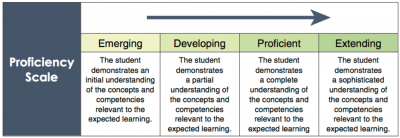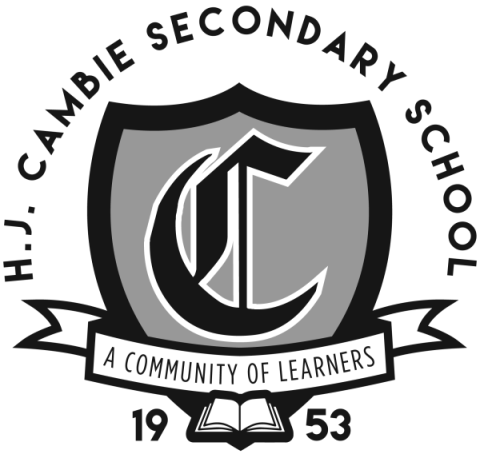Raising the Bar - Student Success in Semester One
As we continue our journey of modernizing assessment practices at Cambie, we can see clear evidence of the benefits of this journey in our report cards. With semester one of the 2021-2022 school year now complete, it is a good time to check in on these benefits to student learning and growth.
At the heart of our assessment practices are beliefs that:
- learning and growth is ongoing throughout the semester
- students marks should reflect their growth and improvement over the term, rather than the averaging of earlier and later tasks
- timely descriptive feedback on student learning is required for creating opportunities for growth
- the majority of student work is assessed for feedback only so that students are best prepared to demonstrate their understanding at the end of a unit or term
- the Ministry of Education Proficiency Scale (pictured below) is an effective tool to help students understand where they are in their learning and what their next steps might be

Our Beliefs in Action
As we look at student improvement from the mid-term report cards to the final semester one report cards, we can see significant evidence of our students' growth. The table below shows the significant growth made by our students in the second half of the semester.
| Semester One Mid- Term Report Card |
Semester One Final Report Card |
|
|---|---|---|
| A or Emerging | 696 (35% of student marks) | 869 (42% of student marks) |
| B or Proficient | 741 (37% of student marks) | 687 (33% of student marks) |
| C-/C/C+ or Developing | 419 (21% of student marks) | 408 (20% of student marks) |
| F/I or Emerging | 131 (7% of student marks) | 97 (5% of student marks) |
***Please note that letter grades and proficiency levels have been combined in this table for illustrative purposes only and not to suggest that there is equivalency between the two systems. How we define "A" versus "Extending" are quite different even though they both represent the top level of academic achievement.
Ongoing Progress
Changing practice is hard, especially when it is related to something as deeply ingrained in our education system as letter grades. Through thoughtful discussion and reflection over the past six years as a school staff, we have made significant strides in shifting our thinking, both for teachers and students. As evidence of this, 85% of the report card marks given to our grade 8 and 9 students in semester one used the modern Proficiency Scale language to describe student achievement rather than traditional letter grades. Our students regularly tell us that they appreciate the feedback they receive based on the proficiency scale and find that it helps them understand how to set goals, improve, and reach higher levels of achievement in all areas!
